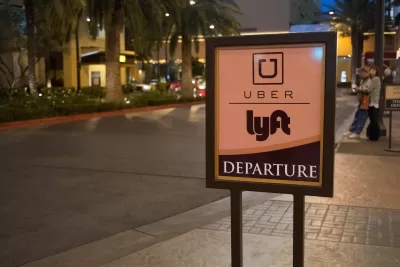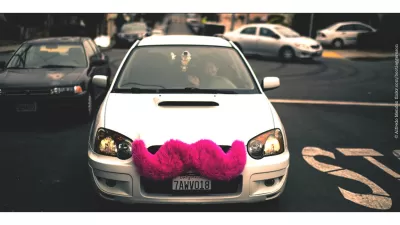As monopolies, especially local ones, loom in some other industries, Uber's predominance has been slipping. Will a duopoly between Uber and Lyft be enough to ensure quality ride-hailing?

Although Uber and Lyft have re-entered Austin's market "with a vengeance," where municipal laws previously kept them away, the prospect of a national Uber-only monopoly seems to be receding. As Joe Cortright writes, "During most of the past calendar year, rival ride-hailing firm Lyft has grown faster, and picked up market share. Nationally, estimates are that Uber's market share has fallen from more than 80 percent to less than 75 percent."
This follows "a series of widely publicized gaffes" from Uber, "ranging from sexual harassment claims against its executives, to a video of the company CEO disparaging one of its drivers, to the ultimate resignation of founder Travis Kalanick." One result has been an informal #deleteUber social media campaign.
Cortright shows that while Uber's still a lot bigger, Lyft rivals its market share in many municipalities. "In general, Lyft has made the biggest inroads in major West Coast markets; in Portland, Lyft has a 45 percent market share, making it a very close rival to Uber."
A duopoly between the two companies may benefit customers, who can switch between the services with little difficulty if they have a bad experience. But a wider field of competitors still seems unlikely in the short term.
FULL STORY: Uber and Lyft: A dynamic duo(poly)?

Alabama: Trump Terminates Settlements for Black Communities Harmed By Raw Sewage
Trump deemed the landmark civil rights agreement “illegal DEI and environmental justice policy.”

Planetizen Federal Action Tracker
A weekly monitor of how Trump’s orders and actions are impacting planners and planning in America.

The 120 Year Old Tiny Home Villages That Sheltered San Francisco’s Earthquake Refugees
More than a century ago, San Francisco mobilized to house thousands of residents displaced by the 1906 earthquake. Could their strategy offer a model for the present?

In Both Crashes and Crime, Public Transportation is Far Safer than Driving
Contrary to popular assumptions, public transportation has far lower crash and crime rates than automobile travel. For safer communities, improve and encourage transit travel.

Report: Zoning Reforms Should Complement Nashville’s Ambitious Transit Plan
Without reform, restrictive zoning codes will limit the impact of the city’s planned transit expansion and could exclude some of the residents who depend on transit the most.

Judge Orders Release of Frozen IRA, IIJA Funding
The decision is a victory for environmental groups who charged that freezing funds for critical infrastructure and disaster response programs caused “real and irreparable harm” to communities.
Urban Design for Planners 1: Software Tools
This six-course series explores essential urban design concepts using open source software and equips planners with the tools they need to participate fully in the urban design process.
Planning for Universal Design
Learn the tools for implementing Universal Design in planning regulations.
Clanton & Associates, Inc.
Jessamine County Fiscal Court
Institute for Housing and Urban Development Studies (IHS)
City of Grandview
Harvard GSD Executive Education
Toledo-Lucas County Plan Commissions
Salt Lake City
NYU Wagner Graduate School of Public Service




























